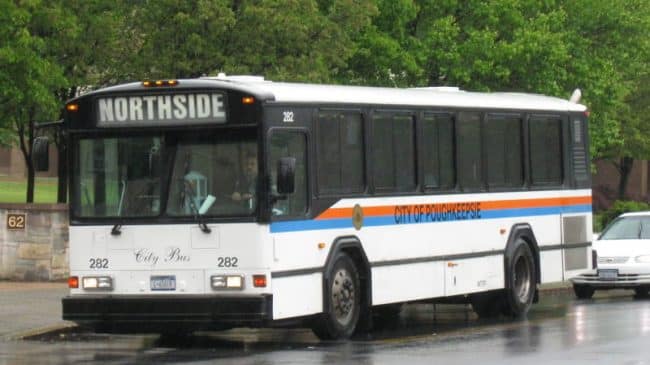Since World War II, most cities have taken over private bus services and run them as monopolies. But with the steady expansion of the private sector bus industry in recent years it is time for government to re-examine how the transit market in the U.S. works.
There are several problems with our current service. First, many transit agencies engage in empire building, protecting their monopolies at all costs. Instead of trying to compete on service quality, they use archaic rules to prevent any sort of competition. These agencies have no incentive to improve their service or reduce their costs. As a result, even while transit usage is growing, debt is growing at certain agencies. Public agencies are able to claim that if they do not receive sufficient funding, they will have to eliminate service which will hurt transit-dependent riders. And some of these public agencies continue to lose huge sums of money regardless of whether ridership is shrinking or growing. Many transit agencies continue to lose money because they are poorly managed, poorly structured and incentives to improve their operations are lacking.
Worse, because agencies know that they will get bailed out by the government, they pursue political goals of service expansion over improvements such as reducing bus headways which would benefit the rider. As a result agencies such as the Massachusetts Bay Transportation Authority (MBTA) are expanding their service area while cutting headways, providing poorer overall service. Such expansions may also ignore pressing needs such as maintenance and safety.
Stretched by poor management and overexpansion, one major disruption can wreck the entire agency. Enter the snowstorms that crippled Boston this past winter. The resulting shutdown caused the CEO of MBTA to resign, yet the agency’s problems stretch far beyond her. Yes, Boston received a lot of snow, but such snow should never shutdown transit service for a week. On the positive side, the shutdown provided positive publicity for 18 private bus carriers which continued to transport riders to work. These smaller private services have existed for several years, but they have been overshadowed by the larger MBTA.
Yet private transit has not exactly been welcomed with open arms in Massachusetts. Two years ago the state announced plans for new commuter rail to New Bedford, Springfield, Cape Cod, and the Berkshires at a cost of more than $3 billion. This was despite the fact that private bus carriers were already running these routes and getting people where they needed to be, at considerably less cost to taxpayers. In fact, according to the Department of Transportation study, the past 10 MBTA expansions have driven away private bus companies, leaving 116 communities without direct bus services. Instead of spending the money on needed maintenance and repairs, the state chose to expand its transit empire and eliminate any competition.
Other regions have taken a different approach. In the last week of March, the new venture-backed private bus service Leap began offering rides in the San Francisco area in luxury shuttles. Leap buses can accommodate 30 people in armchairs or plush stools along a wooden counter. Leap is expanding transit service by providing a new type of service.
Up until the launch of private bus services such as the Chariot, Loup and Leap, public transit users in the area depended solely on MUNI – the public bus service heavily subsidized by the government. The MUNI buses are notoriously slow, unreliable and over-crowded. Although SF Municipal Transportation Agency had planned “MUNI forward” program to alleviate the commute crowding for years, changes were stalled by the recession and budget problems.
Muni has not exactly welcomed LEAP with open arms. One of its former employees filed a lawsuit alleging that the service discriminates against the physically disabled. But MUNI has not engaged in empire building and state officials have allowed LEAP to offer complementary service.
Private sector services provide other positive benefits for publicly operated transit service. Technology developed by Leap and other private app developers allow passengers to find the nearest stop and track each bus in real time using their smart phone application. Information on the number of available seats at any given time is also provided. Many public agencies are adopting these service improvements. These applications provide two critical services for potential riders. First, they reduce the uncertainty over wait time, a major transit service drawback. Second, they allow commuters with the option of driving or using active transportation to choose an alternative when there are long bus wait times. This increases the number of paying customers and satisfaction with the service.
So how can public agencies and private companies work together to improve transit service? First, public agencies should operate in their core competency areas. Providing paratransit service and bus routes with near-empty buses is a poor use of limited resources. Private entities can operate these types of service at a higher level and a lower cost. Second, if a private company is offering quality service on an existing route, unless there is a proven case that the public sector can operate better service, it shouldn’t enter this market. Instead resources could be used for maintenance and headway reductions on existing routes. Finally, in the absence of a perfectly functioning free-market, develop a transit coordinating council that helps coordinate service between public and private entities. Public sector transit agencies should view private services as partners not adversaries. To truly improve transit service in this country we need to change our approach.

